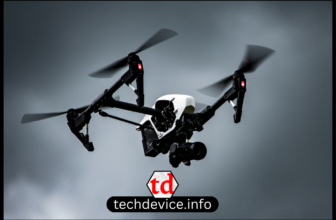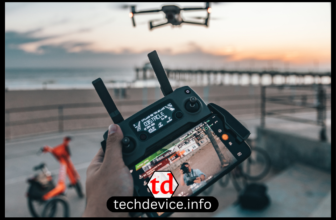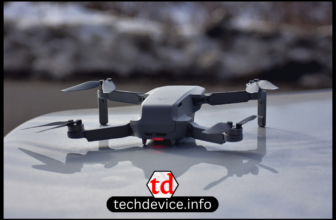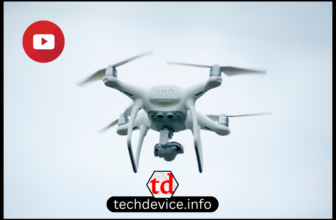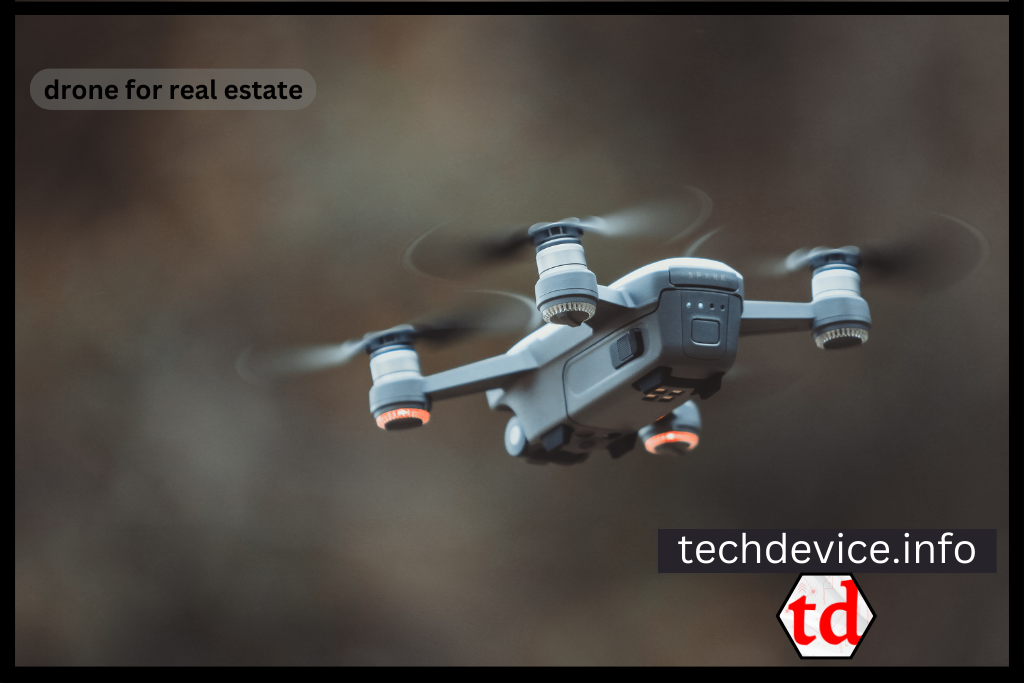
Looking for the best drone camera for real estate? Autel Evo Lite+, DJI Mavic 3, Parrot ANAFI Ai, DJI Mini 3 Pro, and Holy Stone HS720E are great choices for drone lovers.
The Best Drone Camera for Real Estate
Drones have made aerial cinematography accessible to the general public by making the hobby affordable and safe. Users can fly mostly worry-free, allowing them to get more and more creative with the applications of their equipment. Now drones are used for everything from inspecting miles of pipeline and tall structures, extended search and rescue missions, and perhaps what they are most known for cinematography and photography. Whether you are a seasoned pilot or a beginner, getting lost in the options available when purchasing a new drone is easy. So if you are looking for the best drone camera for real estate photography, you have come to the right guide.
1- Autel Evo Lite+ (Best Drone Camera for Real Estate)
The Evo Lite+ is the latest offering from Autel Robotics in their drone lineup. It packs a 1″ CMOS sensor capable of 6K video, giving you awe-inspiring footage. With a top-end ISO of 48000, this drone is one of the best drone cameras for real estate. A max flight time of 40 minutes ensures you have plenty of time to capture every angle of your subject.
This Autel Robotics drone has three-way obstacle sensors for safe flying. So if the property you work at has many trees, you won’t have to worry as much. And it has a maximum flight range of 7.4 miles, so you can fly while trusting that your drone and radio will always have a strong connection.
It’s a double-edged sword, but Autel drones don’t come with geographically based flight limits like DJI drones. That makes it easier to fly in certain areas. But it also means you risk breaking FAA rules and putting airplane pilots in danger if you aren’t careful. So always check local regulations before lifting off the ground, and keep your eyes open for low-flying aircraft.
Specs
- Camera: 20 MP
- Video quality: 6K at 24/25/30fps
- Max flight time: 40 minutes
- Onboard storage: 6 GB
Pros and Cons
Pros
- ISO Expandable up to 48000 with Night Mode
- Large 1″ CMOS Sensor
- 6K video
- Outstanding hyper-lapse performance
- Obstacle detection
Cons
- The bulky design has portability issues
- No LOG profile for video
2- DJI Mavic 3 (Best for Photography)
DJI has been an industry leader for many years regarding drone technology. In DJI’s latest offering from the Mavic lineup, the Mavic 3 carries the industry’s first-ever dual-camera system in a cine-drone. The primary camera is a micro 4/3 from Hasselblad with a focal equivalent of 24mm. The second camera is a ½” telephoto camera with a 162mm focal length.
The raw image formats and bracketing capabilities make the Mavic 3 a photographic powerhouse compared to any other drone of its class. The bracketing is especially useful for real estate applications. It will allow your drone photos to more closely match your interior shots if you are someone who uses HDR. While the video isn’t quite up in the 6K range, the Mavic 3 shoots a maximum of 5.1k at 50fps for pilots requiring more from their drone’s video abilities.
The consensus related to DJI’s listed flight time is that 46 minutes feels embellished. However, the actual flight time is still around 40 minutes, which is a respectable flight time for a drone of size and weight. And 40 minutes of flight time is much better than the measly 15-20 minutes offered ten years ago. Plus, 40 minutes should be plenty of time to get the winning shots if you strictly take still photos.
Specs
- Camera: 20 MP
- Video quality: 5.1K at 24/25/30/48/50 fps
- Max flight time: 46 minutes
- Onboard storage: 6 GB
Pros and Cons
Pros
- Huge 4/3 CMOS sensor
- Larger frame and weight for better stabilization
- Omni directional
- Very stable in flight
Cons
- Battery life seems embellished.
- Very expensive.
3- Parrot ANAFI Ai (Best Premium)
The Parrot ANAFI Ai offers features that no other drone on the market does. Suppose your real estate aerial photography business requires 3D telemetry mapping of properties or structures on the property. In that case, this is the drone for you. It’s also an open-source drone, so that you can tailor it to your needs.
The ANAFI Ai is also unique in its 4G connectivity, allowing you to operate the drone from any distance. You still need to pay attention to FAA regulations, though, so you won’t be able to take advantage of that in most situations. The biggest plus of the 4G connection is that the drone will remain connected to the remote even when it is behind obstacles. Suppose you are flying on a heavily forested property with prominent terrain features or somewhere with other buildings. In that case, that connectivity is a huge asset.
Regarding camera specs, you get a 48 MB camera. A Quad Bayer sensor provides a 14-EV dynamic range in HDR 10 mode. Unfortunately, the video quality is only 4K at 60p, which is lower than significantly cheaper drones. Still, its unique use case and specific target market set it in a class of its own.
Specs
- Camera: 48 MP
- Video quality: 4K at 48/50/60 fps
- Max flight time: 32 minutes
- Onboard storage: None
Pros and Cons
Pros
- Open source drone for lots of customizability
- 4G connectivity provides a stable connection with remote
- Ability to program flight plans
- Six-axis stabilization for sharp images
Cons
- Very expensive
- Tech specs of hardware leave a lot to be desired
4- DJI Mini 3 Pro (Best for Beginners)
DJI has been paving the way in the drone industry, and a Mini 3 Pro is one of the most accessible drones to get started with drone flying. Since its inception, DJI has perfected its flight stabilization technology, making flights smooth and easy to control. Its drones also have a return-to-home failsafe, so you can worry less about losing control.
The Mini 3 Pro has a 48 MP camera capable of producing raw images, giving you more control over exposure adjustments. And you can bracket with this drone, so your exterior aerials will match your camera photos if you like HDR images. Plus, the pre-programmed intelligent flight modes help you get excellent shots even if you are new to flying.
The Mini 3 Pro has 4K 60fps video capabilities for creating videos. Video footage is smooth and stable, even if you are contending with some wind. And the best drone camera for real estate can rotate 90 degrees, allowing for uncropped vertical video and photos. It truly opens the doors for creators, even if they are new to flying drones.
Specs
- Camera: 48 MP
- Video quality: 4K at 24/25/30/48/50/60 fps
- Max flight time: 35 minutes
- Onboard storage: None
Pros and Cons
Pros
- Easy to use.
- Feature-rich for the price.
- Vertical video.
- Flight modes ideal for beginners.
Cons
- Additional batteries and equipment can be pricy.
5- Holy Stone HS720E (Best Budget)
For those who want to get started with drone photographs for their real estate work without a huge investment, the Holy Stone HS720E is a fantastic choice. It comes with two batteries that provide 23 minutes of flight time each, giving you 46 minutes in the air. That’s more than enough to get plenty of shots of a listing. It also has a quality case to protect your drone when traveling between shoots.
Specs
- Camera: 8 MP
- Video quality: 4K at 30fps
- Max flight time: 23 minutes per battery
- Onboard storage: None
Pros and Cons
Pros
- Good quality 4K video
- Good battery life
- Electronic image stabilization works well.
- Includes GPS and intelligent flight modes.
Cons
- Batteries are slow to charge.
- Photo quality could be better.
Conclusion
So, get in touch for the best drone camera for real estate. No matter which drones you choose, practice flying it in a safe environment before you use it for real estate photography. With some practice, you can use your drone to create stunning aerial images and videos that will help you sell more properties.
For more info visit www.techdevice.info


